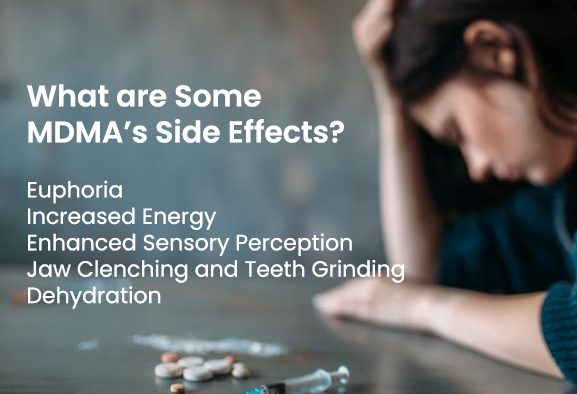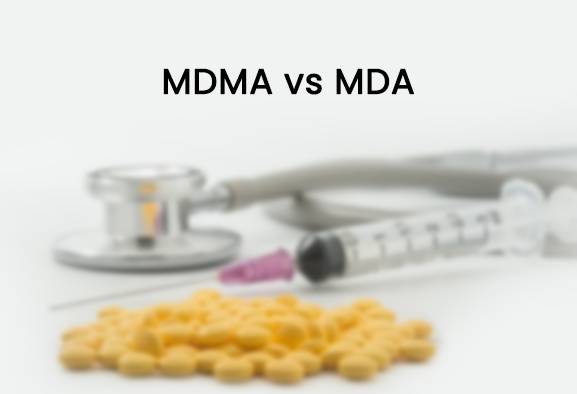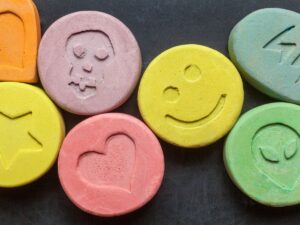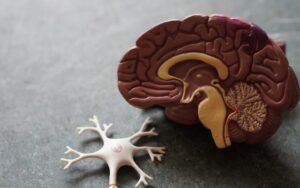MDMA (3,4-methylenedioxymethamphetamine) and MDA (3,4-methylenedioxyamphetamine) are two closely related psychoactive substances that have played significant roles in both recreational and, more recently, therapeutic settings.
Despite their similar chemical structures, the effects they produce and the contexts in which they are used can be markedly different.
This article aims to unravel the complexities surrounding MDMA and MDA, shedding light on their unique characteristics.
Chemical Structure
Chemically, MDMA and MDA are similar, with MDMA having an additional methyl group attached to the nitrogen atom. This slight difference profoundly impacts their pharmacokinetics and pharmacodynamics.
MDA is known for being slightly more potent and having a longer duration of action compared to MDMA. These molecular distinctions lead to varied effects on the user, influencing not just the intensity of the experience but also its qualitative aspects.
Pharmacological Effects
MDMA and MDA act primarily as releasing agents for serotonin, dopamine, and norepinephrine, but their interaction with these neurotransmitters differs slightly. MDMA tends to release more serotonin, contributing to its empathogenic effects.
In contrast, MDA releases more dopamine and norepinephrine, which might account for its more pronounced stimulant effects and hallucinogenic properties. Both substances induce euphoria, increased energy, and altered sensory perception, but the balance between empathogenic and stimulant effects varies.
Subjective Effects
Users often report that MDMA produces strong feelings of empathy, love, and connectedness with others, making it a favorite in social settings like parties and music festivals.
On the other hand, MDA is reported to induce more introspective and psychedelic experiences, with users experiencing more pronounced visual and auditory hallucinations.
While both can enhance sensory perception, the qualitative differences in their effects can influence the choice of substance depending on the user’s desired experience.
Medical and Therapeutic Uses
Recent years have seen a resurgence in interest regarding the therapeutic potential of MDMA, particularly for treating PTSD and other mental health disorders. MDA, however, has not seen the same level of therapeutic interest, likely due to its stronger hallucinogenic properties.
Clinical trials have shown promising results for MDMA-assisted psychotherapy, highlighting its potential as a breakthrough therapy for conditions resistant to conventional treatments.
Risks and Safety
Both MDMA and MDA are associated with risks, including neurotoxicity, cardiotoxicity, and the potential for harmful interactions with other substances. Users may experience adverse effects like hyperthermia, dehydration, and serotonin syndrome.
Harm reduction strategies, such as staying hydrated, regulating body temperature, and testing substances for purity, are crucial to mitigate these risks.
Legal Status and Social Implications
Globally, MDMA and MDA are generally classified as controlled substances, reflecting concerns about their potential for abuse and harm. This legal status impacts research, therapeutic use, and social perception.
While the therapeutic potential of MDMA is gaining recognition, leading to discussions about rescheduling, MDA remains predominantly in the realm of recreational use, with associated legal and social risks.
What are Some Side Effects of MDA?

MDA, or 3,4-Methylenedioxyamphetamine, can induce various physical and psychological side effects, affecting users differently. Here are some common side effects associated with MDA consumption:
-
Physical Effects:
MDA use may lead to heightened physical sensations, including increased heart rate, elevated blood pressure, and muscle tension. Users might also experience tremors and difficulty sleeping.
-
Dehydration:
Due to its stimulant properties, MDA can cause dehydration, especially when combined with activities like dancing or in hot environments. Users must stay hydrated to mitigate this risk.
-
Hyperthermia:
MDA consumption can elevate body temperature, leading to hyperthermia. This condition requires immediate attention, as it can result in heatstroke and other severe health complications.
-
Jaw Clenching and Teeth Grinding:
MDA users often experience jaw clenching and teeth grinding, known as bruxism. This involuntary movement can lead to dental issues and jaw discomfort.
-
Nausea and Vomiting:
Some users may experience gastrointestinal discomfort, including nausea and vomiting, particularly during the onset of MDA’s effects.
-
Appetite Suppression:
MDA is known to suppress appetite, leading to decreased feelings of hunger and potential weight loss, especially with prolonged or frequent use.
-
Psychological Effects:
MDA’s psychoactive properties can induce various psychological effects, including anxiety, paranoia, and hallucinations. Users may also experience mood swings and emotional instability.
Contact All American Detox, the best treatment center for Drug Addiction in America
What are Some MDMA’s Side Effects?

MDMA, or 3,4-methylenedioxymethamphetamine, commonly known as ecstasy or molly, can induce various physical and psychological side effects.
Here are some common side effects associated with MDMA consumption:
-
Euphoria:
MDMA use often leads to intense feelings of euphoria, happiness, and emotional warmth. Users may experience a heightened sense of empathy and connectedness with others.
-
Increased Energy:
MDMA is a stimulant that can boost energy levels and enhance physical stamina. Users may feel more awake, alert, and energetic, which is why the substance is sometimes used recreationally in party settings.
-
Enhanced Sensory Perception:
MDMA can heighten sensory perception, leading to increased appreciation of music, lights, and tactile sensations. Many users report enhanced sensory experiences, such as heightened touch sensitivity and vibrant colors.
-
Jaw Clenching and Teeth Grinding:
MDMA consumption often causes involuntary jaw clenching and teeth grinding, known as bruxism. This side effect can lead to jaw discomfort, dental issues, and soreness.
-
Dehydration:
Due to its stimulant properties, MDMA can cause dehydration by increasing sweating and reducing the body’s ability to regulate temperature. Users need to stay hydrated to prevent overheating and dehydration-related complications.
Dangers of MDA vs MDMA
- Both MDA and MDMA increase the risk of dehydration, overheating, and serotonin syndrome, a potentially life-threatening condition.
- The hallucinogenic effects of MDA and MDMA can lead to dangerous behaviors or traumatic experiences, especially in uncontrolled environments.
- MDMA’s popularity and widespread use have resulted in more emergency room visits and reports of adverse effects, including fatalities.
Is MDA or MDMA More Dangerous?
Determining which substance poses a greater danger is complex and depends on various factors, including dosage, frequency of use, individual physiology, and environmental context.
While MDMA is often associated with a higher risk of acute adverse effects such as hyperthermia and serotonin syndrome, MDA’s psychedelic properties can lead to challenging psychological experiences.
Get the Addiction Treatment from MDMA vs MDA at All American Detox Center
If you or someone you know is struggling with addiction to MDMA and MDA, seeking professional help is crucial for recovery and long-term wellness.
At All American Detox Center, we offer comprehensive addiction treatment programs tailored to address the unique needs of individuals battling substance abuse.
Our experienced team of addiction specialists understands the complexities of MDMA and MDA addiction and provides personalized treatment plans designed to promote healing and recovery. We prioritize individualized care, addressing the physical, emotional, and psychological aspects of addiction.
We provide robust aftercare support services, including alum programs, sober living arrangements, and ongoing therapy sessions, to help individuals transition back into their communities and maintain sobriety.
Know the top Benefits Of Detoxification in the All American Detox Center.
Conclusion
Understanding the differences between MDA and MDMA is crucial for informed decision-making regarding their use. While both substances offer unique psychoactive experiences, they also carry inherent risks that users must acknowledge and mitigate.
Responsible use, education, and harm reduction strategies are essential in promoting safer drug consumption practices.
If you or a loved one is struggling with MDMA and MDA addiction, don’t wait to seek help. Contact the Inpatient Drug rehab center in Los Angeles All American Detox today to learn more about our addiction treatment programs and take the first step toward lasting recovery.





